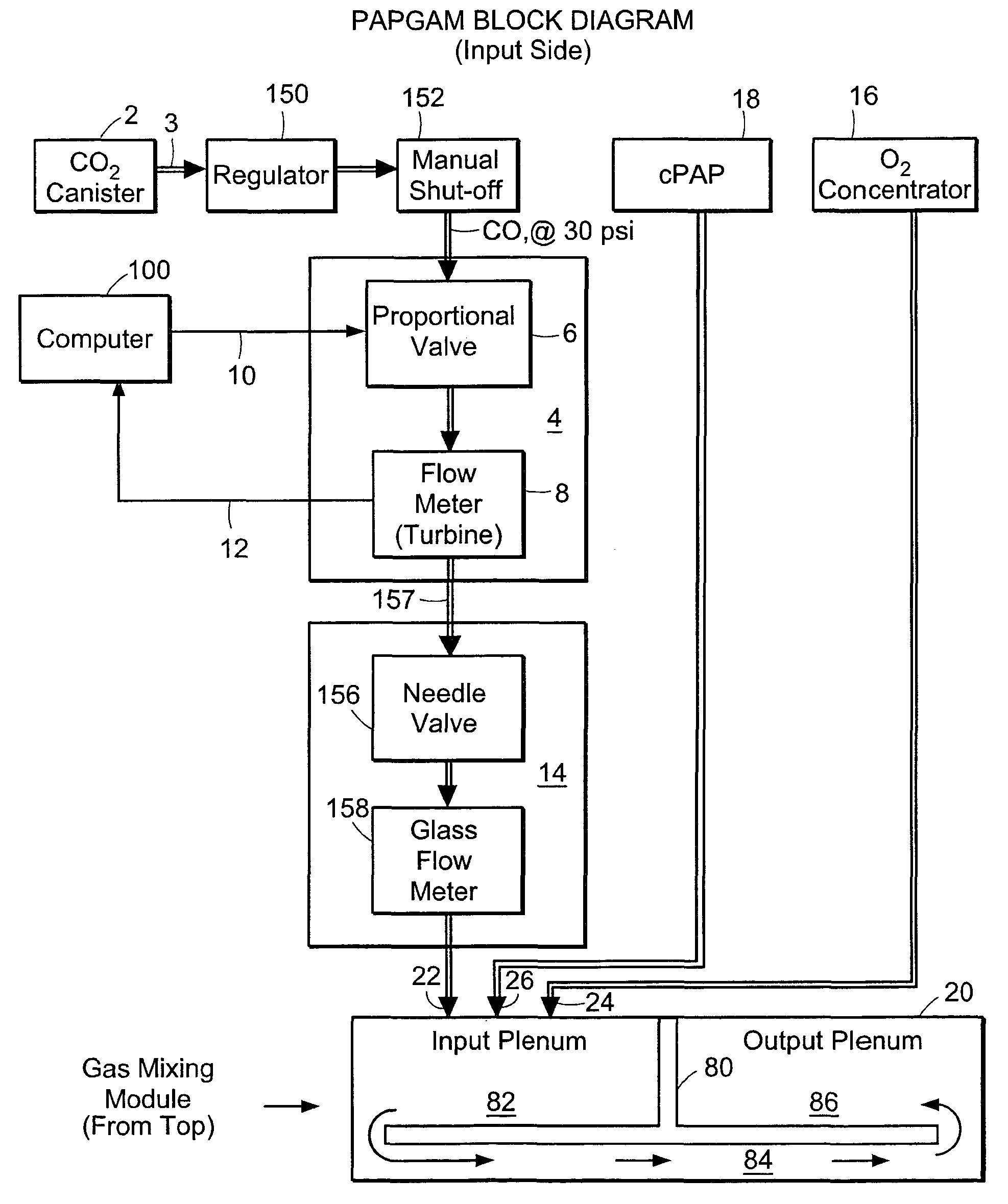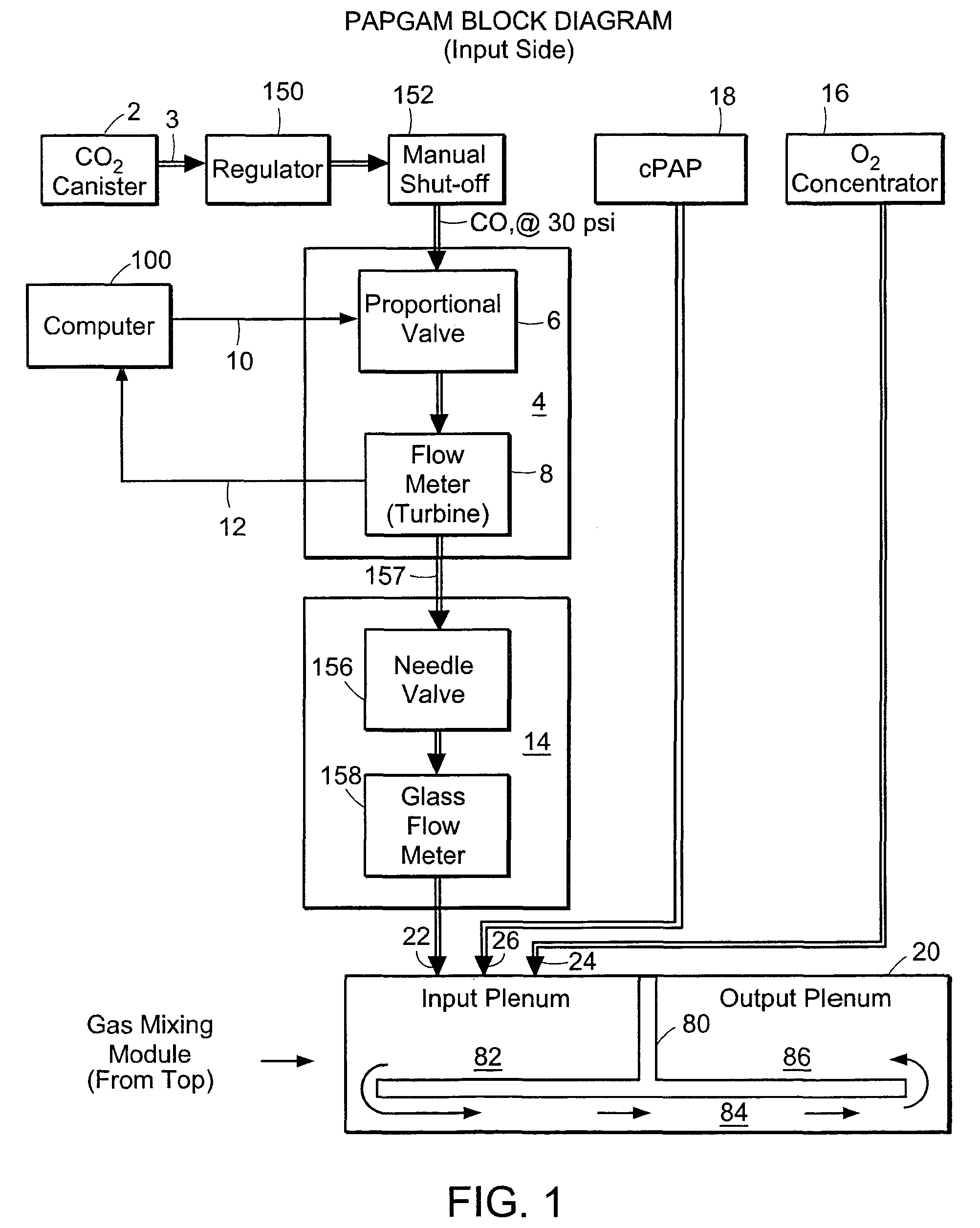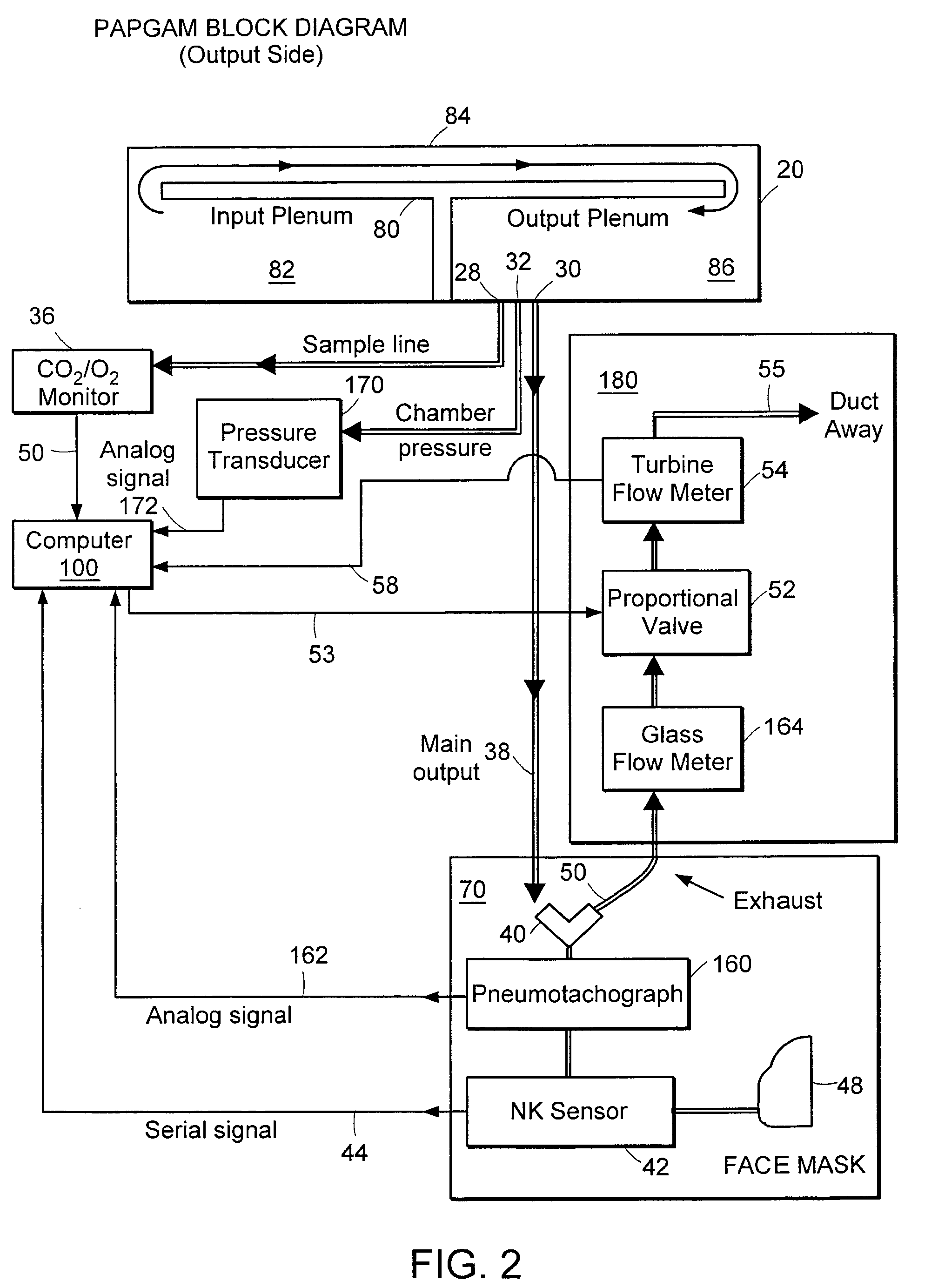Gas systems and methods for enabling respiratory stability
a technology of gas systems and respiratory stability, applied in the direction of valve operating means/release devices, process and machine control, instruments, etc., can solve the problems of not fully treating periodic breathing, little clinical interest in developing methods of improving sleep-breathing quality, and the use of xpap technology and carbon dioxide, so as to improve the quality of life and cognitive function, improve the effect of evidence and improved respiratory stability
- Summary
- Abstract
- Description
- Claims
- Application Information
AI Technical Summary
Benefits of technology
Problems solved by technology
Method used
Image
Examples
embodiment
Periodic Breathing Embodiment
[0142]Periodic breathing in a patient tends to have a fairly fixed-time component. That is, the actual period of the oscillations is generally determined by physiological conditions that are reasonably fixed in the short term. Hence, any periodic breathing patient tends to have well-defined cycles. Incidentally, the principal determinant is the amount of time that it takes for changes in carbon dioxide levels to be sensed by the brain. The breathing period tends to be about double that time. In most congestive heart failure patients, this results in an apnea-to-apnea period of approximately a minute and a half.
[0143]Thus, an embodiment of the invention can detect, using the NK sensor 42 (FIG. 2), where the patient is in the breathing cycle, and apply CO2 only at the appropriate time, e.g., when CO2 levels are dropping. The effect is to abort the problematic breathing cycle altogether.
[0144]An advantage to this approach is the ability to deliver CO2 to a ...
PUM
 Login to View More
Login to View More Abstract
Description
Claims
Application Information
 Login to View More
Login to View More - R&D
- Intellectual Property
- Life Sciences
- Materials
- Tech Scout
- Unparalleled Data Quality
- Higher Quality Content
- 60% Fewer Hallucinations
Browse by: Latest US Patents, China's latest patents, Technical Efficacy Thesaurus, Application Domain, Technology Topic, Popular Technical Reports.
© 2025 PatSnap. All rights reserved.Legal|Privacy policy|Modern Slavery Act Transparency Statement|Sitemap|About US| Contact US: help@patsnap.com



